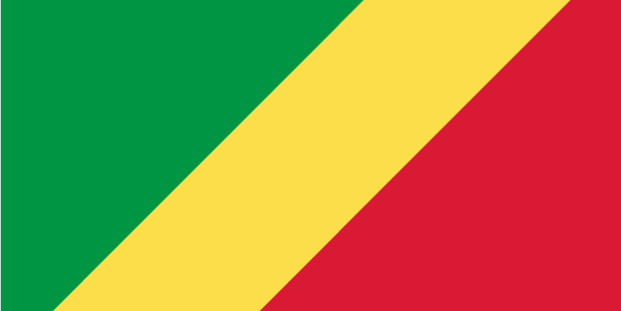After gaining independence from France in 1960, Congo experienced a prolonged period of violence and political instability, with several coups d’état and widespread political violence.1 This situation, along with the resurgence of conflict in the department of Pool between the national military and the 'Ninja militia' in 2016–17, led to the proliferation of small arms and light weapons.2 After various ceasefires and peace agreements, the country established disarmament, demobilisation and reintegration (DDR) programmes,3 as well as a national action plan on peace and security, notably with the support of the UN Development Programme (UNDP).4 Nonetheless, a significant number of weapons and ammunition reportedly remain in the hands of former members of non-state armed groups and DDR programmes are still ongoing.5
In terms of weapons and ammunition management, the country notably benefitted from emergency responses by the UN Mine Action Service (UNMAS), the Mines Advisory Group (MAG), the International Committee of the Red Cross (ICRC) and Handicap International after the dramatic explosion of the Mpila military munition depot in Brazzaville in 2012.6
1 Robert Muggah and Ryan Nichols, Quoi de neuf sur le front congolais ? Évaluation de base sur la circulation des armes légères et de petit calibre en République du Congo (Geneva: Small Arms Survey, 2007), https://www.smallarmssurvey.org/sites/default/files/resources/SAS-SR08-Congo-Brazzaville.pdf.
2 Spyros Demetriou, Robert Muggah and Ian Biddle, Small Arms Availability, Trade and Impacts in the Republic of Congo (Geneva: Small Arms Survey, 2002), https://www.smallarmssurvey.org/resource/small-arms-availability-trade-and-impacts-republic-congo-special-report-02.
3 "Mission d’appui technique des Nations Unies au Haut-Commissariat pour la réinsertion des ex-combattants en vue de l’élaboration d’un programme de démobilisation, désarmement et réinsertion (DDR) en République du Congo," UNDP, 2018, https://info.undp.org/docs/pdc/Documents/COG/Republic%20of%20Congo%20DDR-Glaucia.pdf.
4 "Plan d’Action national de mise en œuvre de la résolution 1325 du conseil de sécurité des nations unies sur les femmes, la paix et la sécurité (2018-2022)," République du Congo, Ministère de la Promotion de la Femme et de l’intégration de la Femme au développement, 2018, http://1325naps.peacewomen.org/wp-content/uploads/2021/07/Congo-Brazzaville-2018-2022.pdf.
5 "Près de 2000 armes de guerres saisies au Congo-Brazzaville," BBC News Afrique, September 7, 2018, https://www.bbc.com/afrique/region-45443828.
6 GICHD, UNMAS Rapid Response Project: Mine Action Armed Violence Reduction, Congo-Brazaville Case Study (Geneva: GICHD, 2012), https://www.files.ethz.ch/isn/157197/AVR-Congo-case-study-Sep2012.pdf.
Launch the country dashboard
Further information
Accidental explosions
Since the Small Arms Survey began collecting data in 1979, three accidental explosions have been reported in the Congo Republic.
Table 1. Accidental explosions in the Congo Republic (1979–2021)
Year | Location | Owner/manager | Deaths | Injuries |
2012 | Brazzaville | State (military) | 500 | 3277 |
2010 | - | N/A | - | - |
2009 | Brazzaville | State (military) | 0 | 0 |
Source: “Unplanned Explosions at Munitions Sites (UEMS) Database,” Small Arms Survey, updated December 15, 2021, https://smallarmssurvey.org/database/unplanned-explosions-munitions-sites-uems.
Cases of diversion
Insufficient information on cases of diversion in the Congo Republic.
Disposal
Insufficient information on the disposal of ammunition in the Congo Republic.
Needs
To further enhance safe and secure ammunition management, the following needs have been identified for the Congo Republic:
- Capacity development for the destruction of surplus stockpiles.
Source: Congo, National Report on the Implementation of the Programme of Action on Small Arms and Light Weapons (PoA) and the International Tracing Instrument (ITI) (New York: Permanent Mission of Congo to the UN, 2020)



